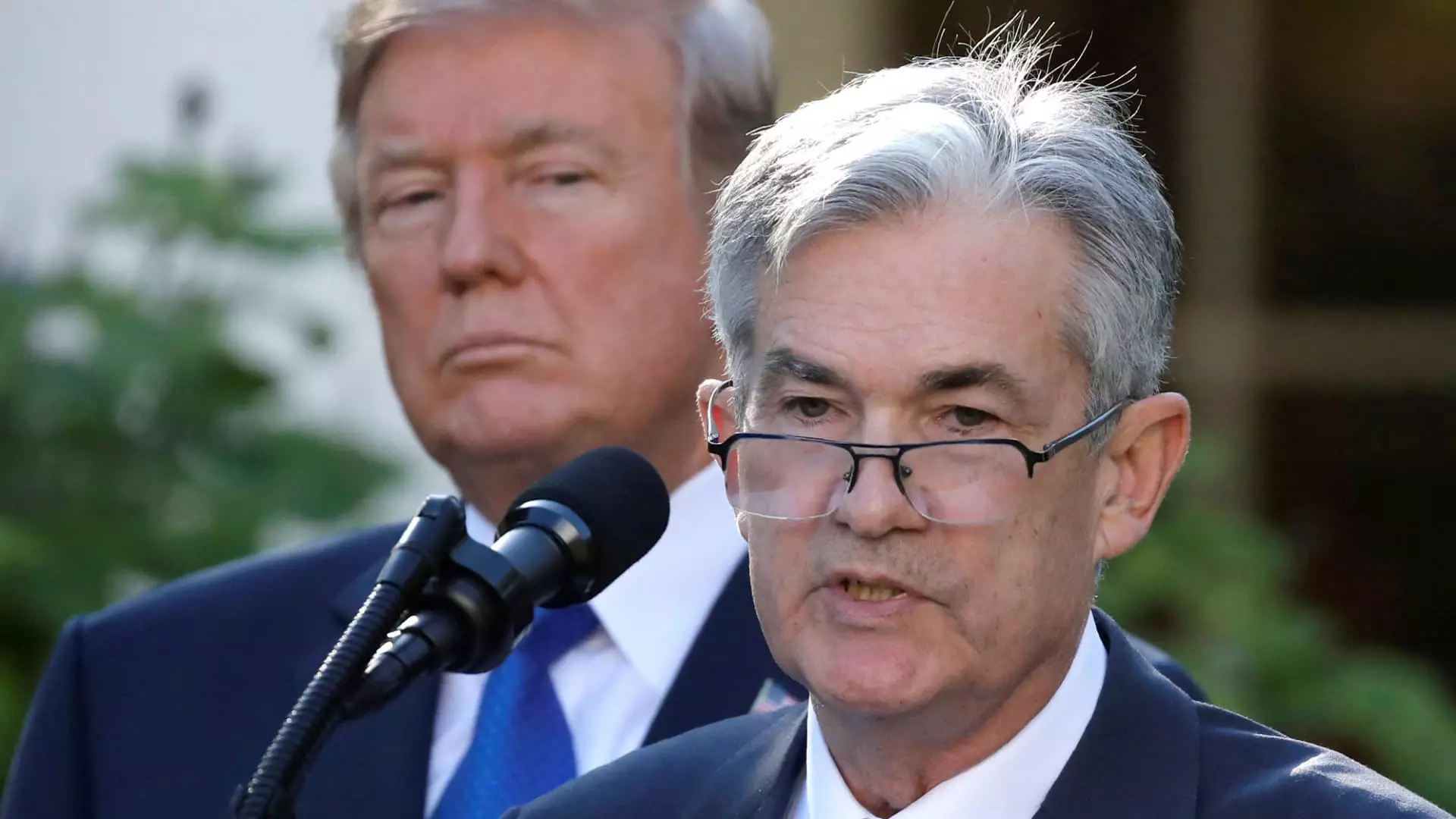The current political climate surrounding the Federal Reserve Chair Jerome Powell is fraught with tension. Despite persistent calls for change from political leaders, including President Donald Trump, Powell finds himself in a position where he is expected to hold interest rates steady during this week’s meetings. The pressures facing Powell are not simply political; they deeply intertwine with the substantial economic realities that most Americans face daily. While futures market figures from the CME Group indicate a negligible chance of an interest rate cut in the near term, the fear among consumers and businesses remains palpable. The rhetoric is heating up, yet the Federal Reserve seems determined to remain staunch in its decisions, leaving the American populace to shoulder economic burdens alone.
In this economic scenario, Trump has criticized the Federal Reserve’s high federal funds rate, suggesting that it restricts borrowing for consumers and businesses alike, ultimately exacerbating economic struggles. This state of affairs highlights a paradoxical situation: the very entity designed to stabilize and nurture the economy finds itself at odds with political sentiment, leading to a standoff that could have dire consequences.
The Impact on Everyday Lives
For most Americans, the implications of the Federal Reserve’s policies are anything but abstract. The rate imposed by the Fed influences everything from credit card debt to home mortgages, determining how Americans manage their financial lives. Senior analysts, such as Matt Schulz from LendingTree, articulate that the interconnectedness of high interest rates, persistent inflation, and an uncertain economic forecast creates a precarious situation for consumers.
Consider the plight of those struggling under the weight of exorbitant credit card debt. As credit card rates hover around an average annual percentage rate just north of 20%, many individuals are left feeling trapped. Experts advocate for proactive measures — consumers are encouraged to take control of their financial destinies rather than waiting hopelessly for a rate cut that may not arrive for months. Borrowers with good credit are cautioned that they have more power than they realize; switching to a zero-interest balance transfer credit card or utilizing lower-rate personal loans could be viable strategies to alleviate financial pressure.
Housing: A Barrier to Entry
The housing market is another sector feeling the sting of stagnant interest rates. Despite the Fed’s tenuous position, the average mortgage rates remain stubbornly high, hovering around 6.9%. Consequently, would-be homebuyers are trapped in a cycle of limited inventory and affordability issues. Schulz notes that prospective homeowners shouldn’t expect any major breakthroughs in mortgage rates in the immediate future, indicating that the status quo will be maintained.
This reality poses a significant hurdle for entry-level buyers who are grappling with both the costs of homeownership and an increasingly competitive market. Each dip in enthusiasm for home buying correlates to the wider economic malaise, further complicating the overall recovery.
The Struggle in the Auto Industry
The auto market offers a complementary reflection of broader economic trends, revealing additional layers of complexity. Current trends show that while automotive loan rates are not directly linked to the Fed’s actions, rising car prices fueled by trade policies have cascaded into higher monthly payment obligations for consumers. With average rates on five-year new car loans hitting approximately 7.24%, coupled with escalating car prices, the financial burdens for consumers are intensifying.
Indeed, the combination of soaring prices and monthly payments exceeding $1,000 for 20% of households with car loans paints a grim picture. However, auto shoppers are advised to seek financing before entering a dealership in order to secure favorable terms. It illustrates a critical point: the onus ultimately lies on consumers to navigate these treacherous economic waters almost independently.
The Education Sector: An Ongoing Challenge
Meanwhile, the education sector also experiences the effects of fixed interest rates, with federal student loan rates set annually. Currently, undergraduate federal student loans carry a rate of 6.53%, with a slight drop to 6.39% expected soon. However, the lack of significant relief in the broader economic landscape, coupled with dwindling federal loan forgiveness options, places pressure on borrowers already burdened by debt.
Interestingly, amidst this economic turmoil, the landscape for savers remains somewhat positive, with top-performing online savings accounts offering yields above 4%. While the Federal Reserve does not directly set deposit rates, the current environment allows savers — especially retirees — to find some comfort. It presents an ironic twist: amidst a narrative dominated by financial hardship, certain segments of the population can still reap benefits, as long as they are savvy in managing their savings.
The Federal Reserve’s conservative approach, under significant political scrutiny, presents a multifaceted challenge. Whether they can navigate these pressures without further unsettling the economic equilibrium remains to be seen. However, the reality is that for millions of Americans, the stakes have never been higher.

